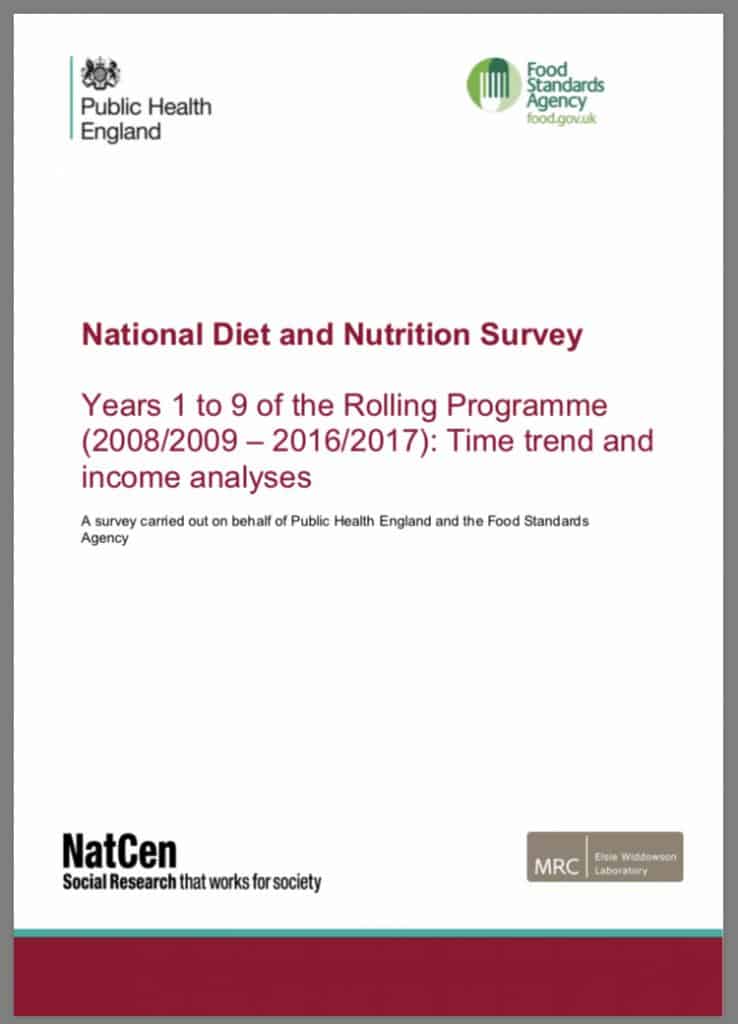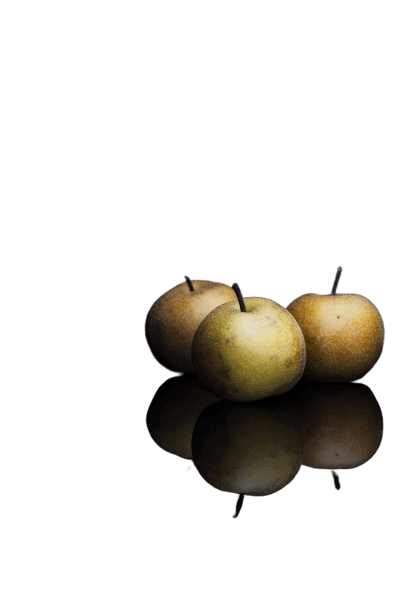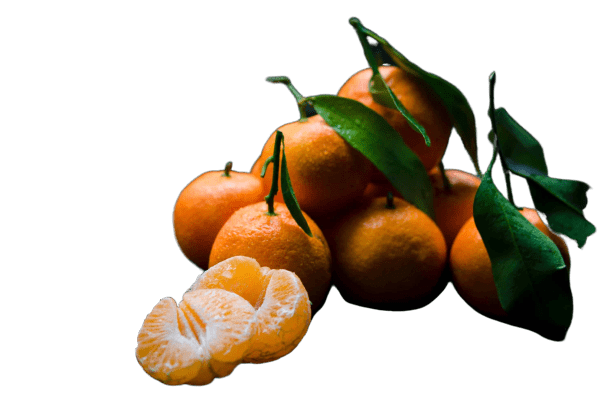How to protect yourself and others from COVID
The COVID-19 pandemic has had a devastating effect on people living in the west. No group has been harder hit than our elderly in care homes. Under the guidance of the World Health Organisation and public health, our governments have responded by bringing in mandatory social distancing measures, wearing cloth masks in public, using hand hygiene, and rolling out vaccination programmes with remarkable haste before clinical trials have ended. To protect the vulnerable from catching the COVID-19 virus, global response efforts have focused on locking people away to prevent spreading germs. But is placing our elderly in care homes on lockdown with no visitors proven to be the best way to save lives?
Perhaps, like me, you’ve been trying to make sense of the data from around the world. Why are some countries hit so much harder than others? Is it really because of physical distancing measures, better use of surgical masks, and reduced person to person contact?
Maybe you’ve also noticed that the correlation between low COVID mortality rates and distance from England is stronger than living in a country with strict lockdown restrictions. If you can manage to escape right the way across the world to anywhere in East Asia, you’ve got a much better chance of surviving the virus. Just kidding. Sorta.
This might be more pertinent to protecting yourself from COVID...
You might have noticed that those countries with the highest per capita intake of sugar, wheat, and vegetable oils have much worse outcomes than people eating anything other than wheat + sugar + vegetable oils. It doesn’t seem to matter what people eat, so long as it isn’t mostly wheat + sugar + vegetable oils. And that includes rice, cassava, maize, and root and tuber crops.
It’s almost as if eating lots of cakes, biscuits, puddings, desserts, buns, and breakfast cereal might be bad for your health! The next thing they’ll tell us is that those ultra-processed, sweet treats that so many of us are addicted to and base our diets on might lead to obesity.
What alters your resistance to infections and can you use this knowledge to protect yourself from COVID?
You’ve heard of the devastating diseases meningococcal meningitis and meningococcal sepsis, right? They’re awful conditions with high rates of mortality and long term illness. When I worked as a doctor in paediatrics, we used to say that 1 in 10 people carry the bug for meningococcal meningitis and sepsis up their nose but don’t get sick. The numbers for asymptomatic nasal carriage can vary anywhere from <3-80% of various populations, depending on age, how much close contact you have, and where you live.
But only a tiny proportion of people who come into contact with Neisseria meningitidis, the bacteria which causes the petrifying illnesses causing death, hospitalisation, or a stint in an intensive care unit, will get sick. The rest won’t even know it’s hanging-out up their nose or in the back of their throats.
Why is that? What’s different about the people who get sick and those who don’t? Isn’t that an important question to ask? If most people appear to be practically bulletproof when it comes to meningococcal disease, how can we extend this resistance to everyone in the population?
We can ask the same question about coronaviruses. What’s so special about those who get sick and those who don’t?
So what role does nutrition play in altering your risk of infection?
This question isn’t just critical for your health but for the health of other people close to you; especially those most vulnerable. Have you considered what you can do to save lives other than avoiding contact with other people?
If one more person tells me that yes, diet is important, but you can’t get people to change their diets, I will scream!
Remember Ferris Bueller’s Day Off? You know that bit after Jeanie chats to Garth Volbeck in the police station? She’s been complaining about why she’s mad at her brother. Garth suggests she talk to someone.
Well today, I’m Jeannie. And if anyone else says now’s not the time to talk about changing people’s diets, they “lose a testicle.”
I know change is hard. So lots of people see it as a barrier to changing your diet. But is it really as hard as summiting K2 in winter?
I think a big objection to making dietary change is that nearly everyone assumes that changing your diet means you’re going to have to experience hunger and discomfort. Because the words diet and calorie-restriction are so intertwined. But I don’t believe in counting calories or calorie restriction. It’s a dangerous longterm strategy that’s likely to come back and bite you in the ass later.
You want to know why? Keep reading...
Throughout the COVID-19 pandemic, it’s become ever more apparent that all over the world elders are most vulnerable to severe infection. So it’s laudable you’d want to protect them from the virus. But there are some inconvenient facts you may not be aware of that could save your life (and theirs).
These facts might not prevent you from catching the COVID-19 virus. But they could help you and those you love to get away with mild symptoms and avoid severe disease that land you in hospital or kill you.
Research on the protective role antioxidant vitamins and minerals play in a healthy immune response
Research has consistently revealed that when we measure nutrient levels in people in hospital and intensive care, we identify multiple severe nutritional deficiencies. Particularly in antioxidants like vitamin D, vitamin C, selenium, and zinc. This knowledge predates the current situation.
But studies on those suffering from severe COVID-19 show the exact same thing. Robert Brown did a great job arguing the importance of vitamin D in severe COVID in his letter to the BMJ here.
While this study showed that low zinc levels at clinical admission associates with poor outcomes in COVID-19. How low? If any of the people admitted to hospital had been children, they’d have tentatively been diagnosed with the often fatal childhood zinc deficiency called acrodermatitis enteropathica. The patients who died from coronavirus had even lower levels than those who were admitted and survived. Their zinc levels would have been at the worst end of the zinc deficiency spectrum.
This mini-review discusses the role of vitamin C, vitamin D, and selenium in immunity, and the beneficial effects of these micronutrients in reducing the risk of infectious diseases, particularly COVID-19. While this review on vitamin C – an adjunctive therapy for respiratory infection, sepsis, and COVID-19 goes into even more detail on the ways vitamin C reduces inflammatory cytokines.
We need to take a trip back in time to put the current situation into context
Before we talk more about how important nutrition is for elders in elderly care facilities at risk of SARS-CoV-2 infection, let’s go back to 2010 for a moment. In 2010, the UK government issued a report stating that almost 50,000 people died of malnutrition in the NHS in 2007 alone. Even then, the report highlighted that malnutrition contributes to the severity of infections.
After this, the National Diet and Nutrition Survey (NDNS) started collecting data on diet and nutrient levels in UK citizens. It confirmed that nutritional deficiencies were rampant across all age groups. But the most vulnerable, including elders in care homes, were hardest hit. The NDNS singled out deficiencies in iron, zinc, vitamin B2, folate, selenium, and vitamin A in particular. I’ve summarised the 2019 NDNS publication here https://thefoodphoenix.co.uk/no-wonder-we-are-all-exhausted-our-dietary-guidelines-are-causing-malnutrition/.
There’s a more recent publication by NDNS from December 2020. But the findings are similar. You may be disturbed to learn that the incidence of severe vitamin D deficiency with blood levels under 25 nmol/L in seniors over 65 years was 13%. A blood level of vitamin D of 25 nmol/L is the equivalent of 10 ng/mL (the units used in America). So that’s an excruciating, bone-melting, shockingly low level. The Endocrine Society recommends levels greater than 75 nmol/L (30 ng/mL). For comparison, the average vitamin D level in the Hunter-Gatherer Hadzabe is 115 nmol/L (46 ng/mL).
Do you know what your risk of vitamin D deficiency is?
When I was practising as a paediatrician in Northern Ireland a few years ago, I checked loads of vitamin D levels in kids. From around June to October, levels were fine in all but a few autistic children who stayed low all year. But come October, levels started to drift down. By January, many kids were vitamin D deficient. By March, everyone was. And it took a few months of it being warm enough for kids to get outdoors now and again and play in the sun for their levels to recover.
So throughout the spring and winter, I prescribed 50,000 units of vitamin D per week to most of my paediatric patients for at least a couple of months. Because that was the treatment protocol recommended by the Endocrine Society. These days, I think a lower dose every day is a better option for most. I’ve gone through the research showing that many adults need about 8,000 to 9,000 units a day of vitamin D to get them through the winter here.
I’m curious about people’s vitamin D status this year. Sure, there were lots of kids and fit, healthy people in the prime of their lives outdoors running, cycling and walking last summer. Their vitamin D levels may have been even better than usual. But the people who can’t afford to have low vitamin D levels this winter were those shielding. Those with chronic health conditions, type 2 diabetes with complications, obese people, over 70 years old. People living in assisted living facilities. And I worry too many of them were scared to put their nose out the door in case a heavy breathing jogger running past would infect them. I wouldn’t be at all surprised if the proportion of vitamin D deficient at-risk people this year is even higher than in previous years.
No conversation about how to prevent COVID is complete without discussing type 2 diabetes
Did you know that having type 2 diabetes, a condition characterised by profound metabolic damage and chronic inflammation, puts you at a much higher risk of severe COVID and bacterial infections? And that people with multiple other medical conditions (or comorbidities), like heart disease, are at even higher risk? Of course, you did.
What has protecting yourself from COVID got to do with non-communicable disease and syndemics?
Type 2 diabetes, malnutrition, high blood pressure, a history of heart disease, dementia, and advancing age are some of the greatest risk factors for severe SARS-CoV-2 infection and cytokine storms caused by overwhelming free radicals. On the other hand, children, young adults and healthy people have an infinitesimally low risk of developing cytokine storms and dying. That’s why Richard Horton, editor of the Lancet, and others have called this a syndemic. He says “a syndemic approach reveals biological and social interactions that are important for prognosis, treatment, and health policy.”
Limiting the harm caused by SARS-CoV-2 will demand far greater attention to NCDs and socioeconomic inequality than has hitherto been admitted. A syndemic is not merely a comorbidity. Syndemics are characterised by biological and social interactions between conditions and states, interactions that increase a person's susceptibility to harm or worsen their health outcomes. In the case of COVID-19, attacking NCDs will be a prerequisite for successful containment.
Richard Horton Tweet
Well, as you get older, your risk of being diagnosed with type 2 diabetes and other health conditions like cardiovascular disease increases. Surprised? No. Neither was I. Makes perfect sense.
Type 2 diabetes is a carbohydrate-intolerance problem. And it’s reversible. People with it have abnormally high blood sugar levels after they eat sugars and starches. Starchy foods are those made from:
- grains,
- high-carb root vegetables like potatoes,
- and pulses like beans, lentils, chickpeas, and other legumes.
The best diet for COVID is the one that will put most type 2 diabetics into remission... not send their blood sugars into orbit
It’s worth noting that, according to the UK NDNS, in the 65-74-year-old group, 30% of calories came from cereal grains alone. This figure was 34% in the over 75s. These are the groups of people most likely to be diagnosed with type 2 diabetes and therefore should be recommended a low-carbohydrate diet.
More than 10% of women over 65 years in England have been diagnosed with type 2 diabetes. 15.7% of men aged 65-74 and 13.5 % of men over 75 years in England also have type 2 diabetes. I’ll say it again: type 2 diabetes is a carbohydrate-intolerance condition. It’s reversible with a low carbohydrate diet. Cereal grains will send diabetics blood sugars through the roof. So that’s a worry.
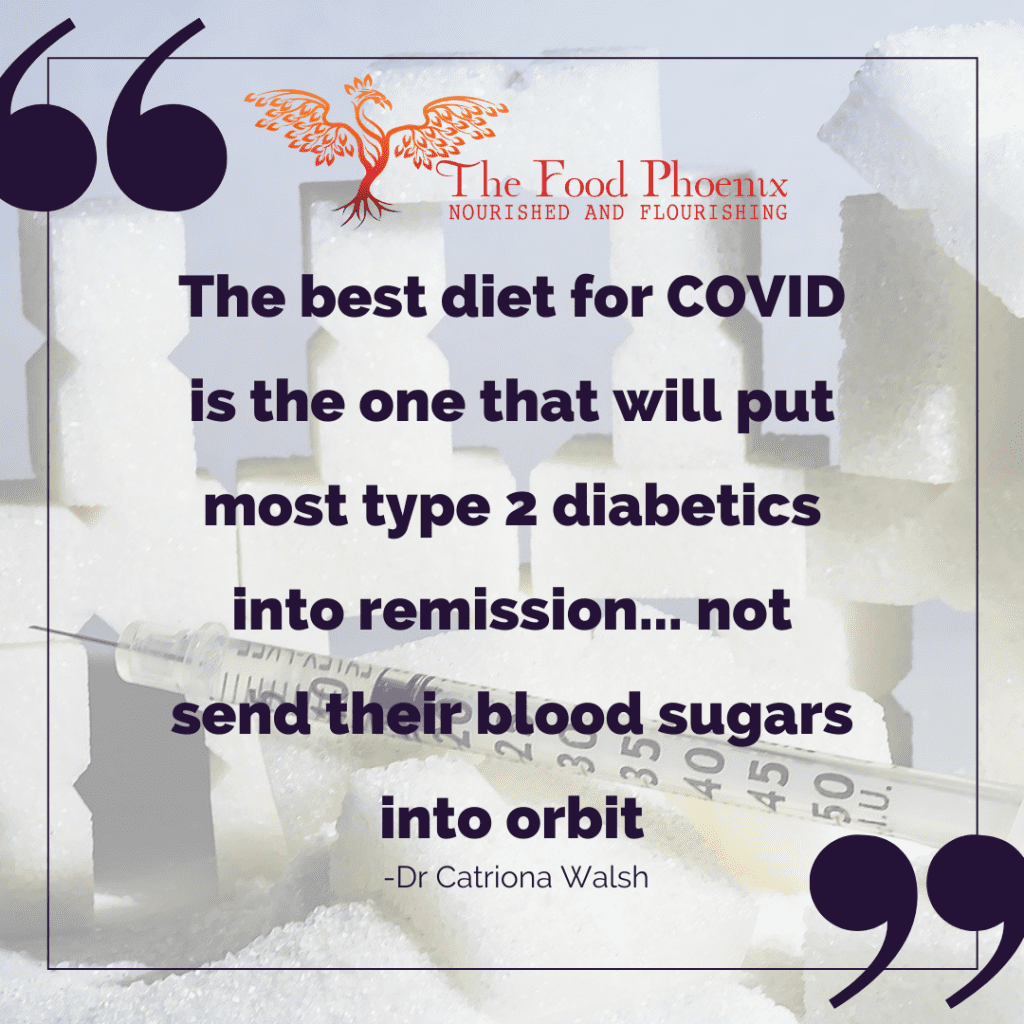
What about hyperglycaemia and outcomes of people with SARS-CoV-2?
If you have type 2 diabetes and you fall ill with COVID-19, you’re more likely to need medical interventions and you’re more likely to die. But if your blood sugar control is better, you’re more likely to do better. Even a high fasting blood sugar above 7 mmol/L in someone not (yet) diagnosed with diabetes places you at a higher risk of dying from COVID. In this study, “Higher median glucose level during hospital stay or after critical diagnosis (≥6.1 mmol/L) was independently associated with increased risks of progression to critical cases/death among non-critical cases, as well as in-hospital mortality in critical cases.” Another study found that “Hyperglycemia in patients with COVID‐19 is significantly associated with a prolonged ICU length of stay, higher need of mechanical ventilation, and increased risk of mortality in the critical care setting.“
Type 2 diabetes is linked with malnutrition... and so is trying to stick with our dietary guidelines.
If you’re interested in seeing the NDNS diet and nutrient figures, you can check out the tables for all the nutrients over the last 11 years yourself. In fact, you should. But you’ll weep. Because you’ll discover how the NHS has been presiding over the steadily increasing levels of malnutrition which contribute to underlying health conditions in the UK population. And done nothing other than egg people on in the effort to become more malnourished. Now more than ever, we’re paying the price.
This report from BAPEN also makes a plea for improving nutrition in elders. It reveals that a staggering 35% of care home residents suffer from malnutrition in England https://www.bapen.org.uk/pdfs/economic-report-short.pdf.
I wonder whether the figures are in truth higher than 1 in 3 care home residents. Because having analysed a sample menu, I fail to see how the average person living in a nursing home in the UK or USA could meet their nutritional needs. But more on that later.
The elephant in the room is that we've known for about a century that people with severe nutrient deficiencies die of overwhelming infections
Malnutrition has long been known as a risk factor for severe infections, including respiratory infections. The early part of the twentieth century saw rapid advancements in our knowledge of how vitamins and minerals contribute to good health.
Back then, doctors were trained to recognise the signs and common symptoms of frank nutritional deficiencies like scurvy, rickets, beriberi, and pellagra. Since then, something has been lost in medical training. This nutritional knowledge, which played such an important role in standard medical care, has been replaced with the belief that all illness can be managed with medications.
Let's hop back in the TARDIS and return to the present day
It’s time to return to the 21st century and reflect on how your new knowledge about malnutrition can help to protect you from severe COVID. And of course, help to prevent deaths from COVID.
The terrible situation in elderly care facilities
In the UK and other westernised countries, deaths from the virus have been higher in care homes.
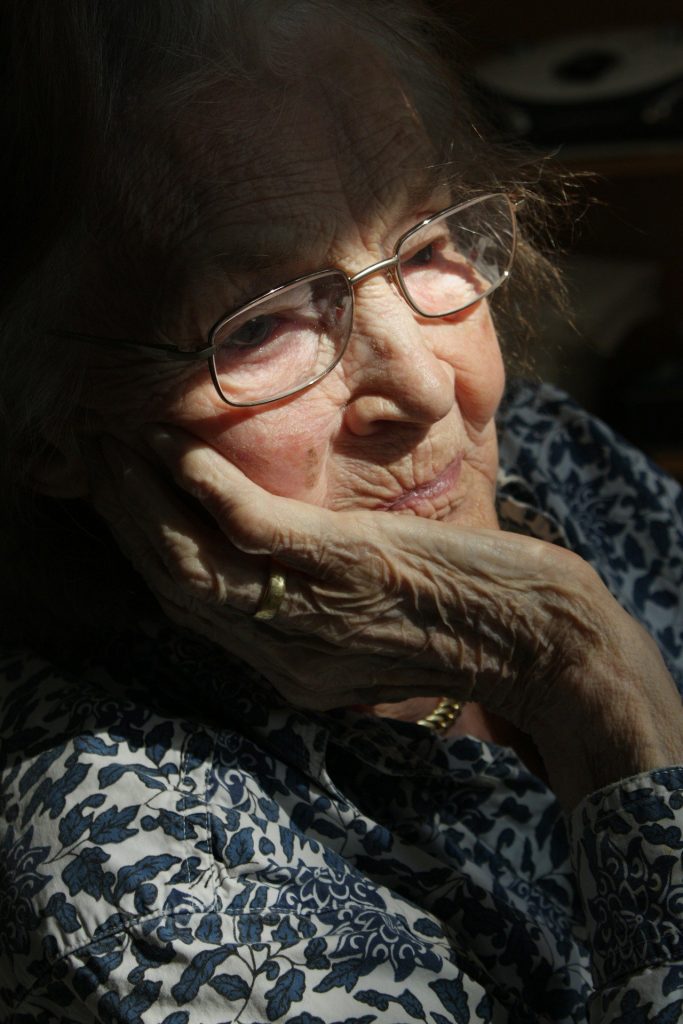
In the first week of 2021, almost three-quarters of deaths with a positive PCR test were in the over 75 years age group in England and Wales. In the UK, about a third of fatalities from the pandemic have occurred in care residents, either in the care home or following hospital admission. On the 19th January 2021, care homes in England experienced a 46% jump in “coronavirus-related deaths.” By that stage, half of all care home residents had already had their first dose of a vaccine to try to induce protective antibodies. News outlets reported that on 20th January 2021, daily deaths within 28 days of a positive PCR hit a record high in the UK.
Disappointing results from current measures attempting to prevent COVID
Despite emergency use authorisation permitting the Pfizer BioNTech COVID-19 vaccine rollout to begin 6 weeks earlier on 8th December 2020 and the Moderna COVID-19 vaccine to start rolling out shortly afterwards, as well as a strict lockdown having been inforced since mid-December, care home deaths were at their highest rate since the previous May. The over 80s (the most at-risk group) were even targeted first in the vaccine rollout.
This is… disappointing, to say the least. So much for physical distancing and wearing a surgical mask in public to try to encourage infection prevention and control, prevent the onset of symptoms, and save lives. It’s obvious we need another level of protection.
It's a question of efficacy
There are also questions about the true efficacy of the Pfizer BioNTech vaccine. Early indications from Israel hint that in real life, it’s less effective at reducing the number of infections than Pfizer had claimed. The Israeli experience suggests it’s closer to 33% efficacy after the first dose.
Peter Doshi, associate editor of the BMJ, queried whether the efficacy was even lower than this after he examined the data from the FDA. Calling for the raw trial data, he speculated that it may only be 19-29% effective at reducing symptomatic infections after both doses. So far, no studies on any of the vaccines have shown they save lives. Nor have drug companies released any evidence they reduce your risk of being admitted to hospital or intensive care.
We don’t have data on whether they reduce spread or prevent longterm fatigue or other COVID-19 complications either. This study on the flu vaccine showing that people vaccinated with the flu in both the current and previous season had more viral RNA in the fine aerosols they breathed out than people who hadn’t received either of those vaccines. This doesn’t necessarily mean that the same thing will happen with COVID. But it might.
And it creates another interesting theory, too: you might assume that vaccinating people stops infectious spread and creates herd immunity. But instead, it might reduce symptoms enough to stop them from realising they have an infection while not altering how many virus particles they’re spreading in aerosols.
By trying to reduce the number of infected people, we’ve placed all our eggs in one basket. And that basket comes with substantial risks to health and the economy.
Now look at the mess our dietary guidelines have got us into
So I was curious to find out how malnutrition contributed to these deaths. Malnutrition won’t be the only factor, but it is reversible. Think about how tricky it would be to defend yourself in court if someone sued you for ignoring malnutrition in a person at risk of severe coronavirus infection who later died. It’s so clear by now that nutrition modulates the inflammatory response that this would be indefensible. Doctors, politicians, dieticians, and care home owners take note.
First up... a typical English care home diet
That’s why I decided to analyse the menu from a typical English care home. I picked the week beginning 9th November 2020 at random. The analysis does show several essential nutrients that are deficient as well as a high intake of sugar. Which comes as no surprise with all the refined carbohydrates in the form of unhealthy snack foods like cakes, cookies, biscuits, and sweets. Refined carbohydrates are often shelf-stable and freezer-safe, so they’re a popular choice for anyone who worries they’ll be forced to quarantine for prolonged periods of time.
You can see for yourself that it was worryingly short in many minerals, including magnesium, iron, zinc, copper, and selenium. Also, several vitamins were low, including the fat-soluble vitamins retinol, vitamins D, E, and K, and the water-soluble vitamins folate, biotin, and vitamin C (ascorbate). And the intake of essential omega 3 fats was also too low to reduce inflammation.
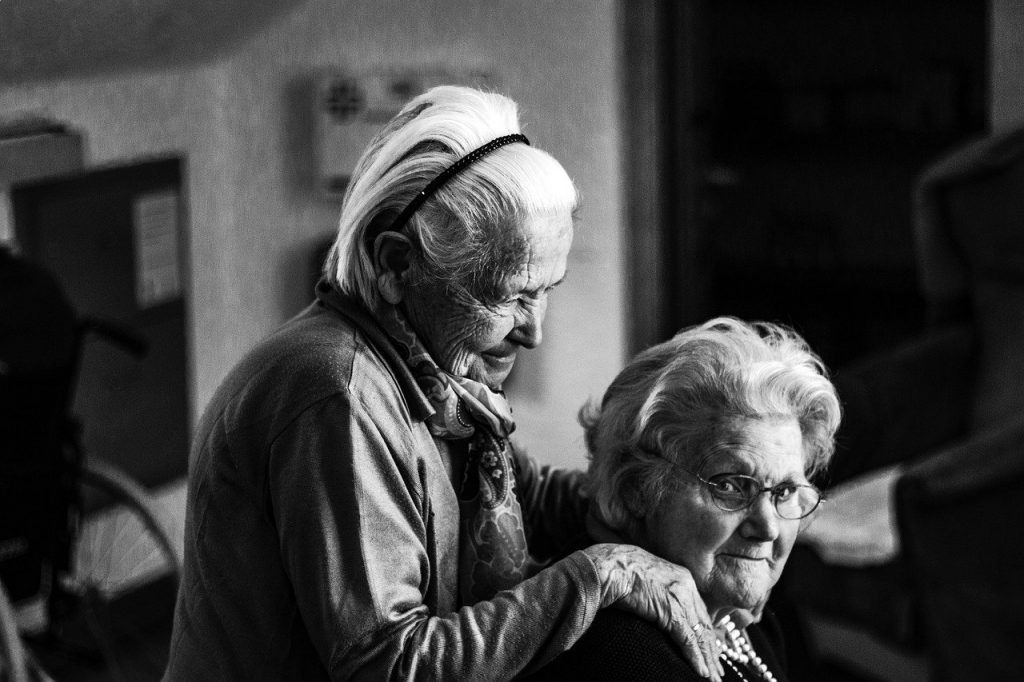
The recommended intakes in the analysis are the minimum that will prevent up to 97.5% of the population from having frank severe nutritional deficiencies.
Except for vitamin D, where only 50% of the population might be prevented from being deficient if they can stick to the recommended intakes all year round. Leaving a high likelihood that half our population will have low blood levels of vitamin D over the winter. That’s even if they do manage to meet the vitamin D recommended intake. And vitamin D levels in the UK won’t return to healthy levels until May to June of 2021 unless we ensure everyone is taking adequate amounts by supplement right now.
Of course, May was when the UK death rate fell last year as coronavirus cases also fell. Coincidence? Hardly.
When I ran this dietary analysis, I used EUFSA 2017 recommendations for an 80-year-old woman weighing 63 kg who is 5’3″. So the caloric goal of 1839 kCal per day is higher than many 80-year-old women will consume in an average week, whether they’re resident in a nursing home or living independently. But if you reduce her caloric intake by a few hundred calories a day to a more realistic figure, her intake of vitamins and minerals will also fall. So I’ve likely underestimated malnutrition during this analysis.
Anyone who cares about the welfare of seniors living in care homes needs to know this to help protect elders from COVID
The problem is global. It’s not limited to this single assisted living facility. Or even only to the UK. Westernised countries, in general, share similarly malnourishing dietary guidelines which are based on low-quality evidence. This means we’re all advised to replace nutrient-dense foods with foods that are low in nutrients. This has been the case for several decades.
Next up... the World War 2 English ration
Out of interest, I decided to analyse a few other dietary patterns to see whether the nutrient intake could be improved in our Hypothetical 80-year-old Female. She would have been born during World War 2 while food was being rationed.

Did you know that, despite rationing, people’s health in the UK was better than before WW2? Rationing continued for almost a decade after the end of the war.
So people changed their diets (grudgingly) around WW2. Experts talk a lot about how much sugar and white flour were reduced during rationing. But I was shocked by how permissive the sugar intake really was. Free sugar intake worked out at about 64 g a day. That is 16 teaspoons of added sugars a day. This may have been less than before rationing was brought in. But it’s not a low-sugar diet by any means.
The care home menu contained 26 g of added sugars. Although in the care home, you have the opportunity to stuff your face with as many cakes and biscuits as you can get your hands on if that’s what you want. All-day long, and if you wake up at night, you can get a milky drink and some biscuits. So if you do this, your sugar intake will end up a lot higher.
Red meat; should we be eating MORE of it?
Another thing that’s often mentioned concerning rationing was how little fresh meat people were allowed to eat. At the end of the war, an adult was “only” permitted 1s 2d of red meat per week. According to Wikipedia, that could buy you 540 g of red meat every week. Which is more than most people eat now and more than the Department of Health recommends. The DOH suggests you limit red meat to 70 g a day, which is 490 g a week.
And if you were diabetic, you could swap the sugar stamps in your ration book for more meat. Which was sensible. Of course, in the 1940s, diabetes was rare, and they were likely addressing type 1 diabetics. But type 2 diabetics are also carbohydrate intolerant.
On top of this, all adults were allowed 113 g of bacon or ham a week. That’s almost half a packet of posh bacon.
Great British institutions, thanks to rationing
Spam wasn’t counted in this rationing, so it became a staple. And for most of WW2, offal (organ meats) weren’t rationed either. So I included liver, kidney, heart, lamb’s brain, and tripe in the analysis. But you could also include variety-meats like trotters, ears, cheeks, chitterlings, Rocky Mountain oysters (bulls’ testicles), tongue, and all sorts of other bits and bobs.
Fish wasn’t rationed either but wasn’t freely available. However, pickled herrings became popular, so I included some of those.
Vegetables weren’t rationed and people were encouraged to grow them in their gardens and keep some backyard hens for eggs; even in the cities. I imagine the roosters didn’t survive too long out of the pot. Those lads are noisy! Plenty of folks in the UK and America took heed of the slogan “Dig For Victory” and converted their lawns and flower beds into vegetable patches.
Potatoes were encouraged. So was wholemeal bread. And you could forage for weeds like dandelions (which I included) as well as seasonal fresh fruits like blackberries (which I didn’t).
The vegetables weren’t exotic or inspiring. But cabbages, turnips, and kale were common. Onions and tomatoes ran short at times.
You've got to be kidding... cod liver oil supports your immune system?
Finally, during WW2, children, pregnant women, and elders were entitled to cod liver oil. So I included half a tablespoon per day in the ration. It’s a wonderful source of fat-soluble vitamins A and D as well as some omega 3 fats. Did you know that cod liver oil is an old (and fairly effective) remedy for tuberculosis? In large part, this appears to be because retinol (vitamin A) and vitamin D are critical components in your immune response to infection. You might call them immune boosters. So they’re important to include in any diet for COVID.
Why did people's health improve in England during rationing?
Of course, the ration during WW2 creates a much more nutritious meal plan than the nursing home menu. To a great extent, this is because people ate nose to tail. The organ meats, spam, and herrings contributed massively to the nutritional intake of the Greatest Generation, the Silent Generation, and even Baby Boomers during their childhood. The plain vegetables also helped. And many poor people were able to increase their intake of red meat because of rationing. Contrary to popular belief, they weren’t healthier only because they replaced white flour with whole wheat or ate a low-sugar diet.
The WW2 diet analysis was a lot more nutrient-dense than the modern care-home diet, even without fortifying their grains with synthetic vitamins and inorganic minerals the way we do today.
Even so, the WW2 diet still had some holes. Intakes of magnesium, selenium (which could probably be brought up to normal by having kidneys a couple of times a week instead of once), iodine, vitamin B6, and vitamin E could be better.
Time to look at another diet... bet you weren't expecting this one though
So I thought I’d see how it stacked up against a nose-to-tail carnivore diet containing lots of protein from shellfish, tinned fish, bacon, beef, liver, and bone broth with some herbs and apple cider vinegar. The carnivore diet, as you’d expect, did much better for most nutrients. Wait, what? You didn’t expect it? Even after everything we’ve talked about when it comes to how nutritious liver, red meat, offal, shellfish, and small oily fish are?
Then let me say it again. Nothing tops liver when it comes to nutrient value. Nothing… Not. A. Thing.
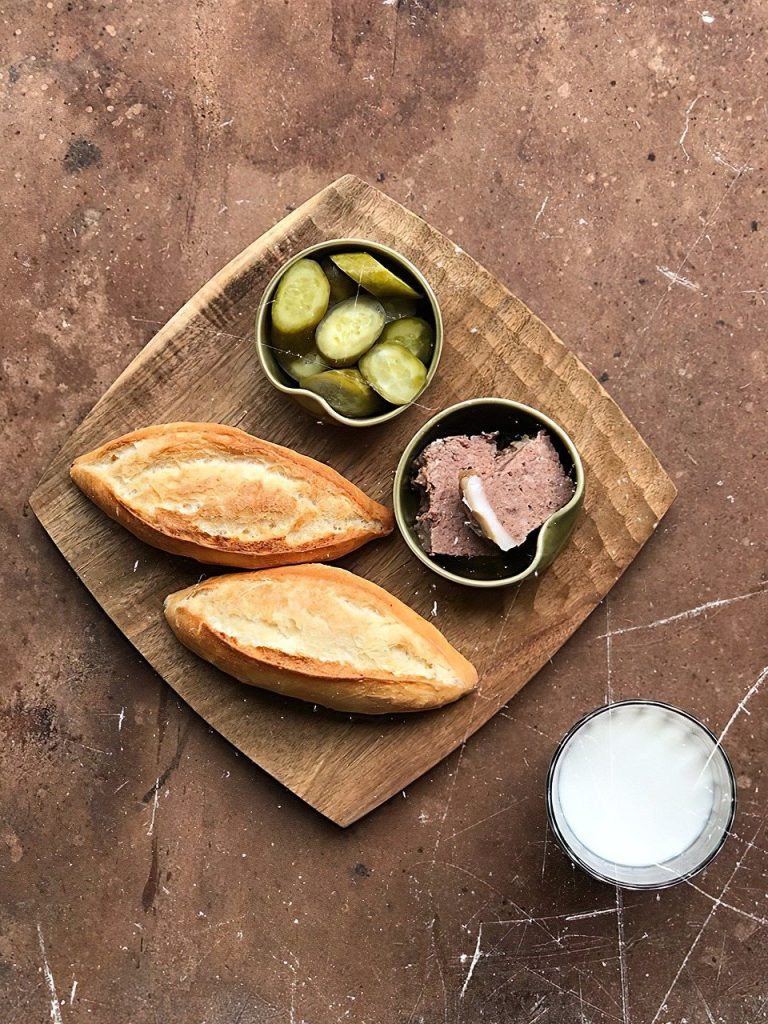
The organs of animals are supremely nutrient-dense. Red meat is more nutritious than poultry. Shellfish are excellent and so are oily fish. I suspect land invertebrates like crickets and mealworms are great as well. But I don’t have them in my database.
Grains are, in some ways, less nutritious than cardboard. Cross my heart. I went and found some of the mineral content of cardboard. And I compared the mineral differences between wheat and cardboard here.
The carnivore diet did come in low for manganese, vitamin K, vitamin C, and folates.
Having said that, my analysis software only measures vitamin K1 from plants. It doesn’t measure vitamin K2 at all, which is found in liver (especially, poultry liver), the dark meat of poultry, pastured egg yolks, and certain cheeses (like Jarlsberg and Gouda). A little more oily fish, like herring, would have brought the vitamin D intake past 15 mcg. Or you could add a little high-quality cod liver oil, which still counts as a food ingredient. Have you ever tried smoked cod livers? They’re delicious. Although may have high levels of heavy metals and other human contaminants. Plus cod is often overfished. So it might be better as an occasional delicacy.
Potassium, magnesium, and vitamin E were also a little borderline, but not substantially different from the other 2 diets. Given how well so many people do on a carnivore diet, it does beg the question; are the intakes of nutrients like vitamin C, manganese, and vitamin K1 conditionally higher when your diet is based on inflammatory foods like grains?
Last diet for COVID... could this be the most appropriate one for seniors with autoimmune problems?
The final diet I thought I’d try was an autoimmune protocol diet. Seniors often suffer from arthritis, hypothyroidism, and other autoimmune conditions. So the autoimmune protocol (AIP diet) seemed like a sensible one to compare. Of course, it included some liver, tinned salmon, beef, vegetables, and herbs. All the micronutrients were easily covered. And so were the essential fats and other nutritional requirements.
It didn’t hit the goal for calcium. But is the recommended dietary intake of calcium ideal? Elderly women may not need 950 mg of dietary calcium every day if the calcium intakes of Japanese people are anything to go by. According to the National Nutrition Survey from 2003 and other studies, the mean calcium intake in Japan was around 450–600 mg/day or less. The rates of vertebral fractures in Japan and the USA are comparable despite life expectancy being greater in Japan. So it makes you wonder what the ideal intake of calcium in the diet is. Particularly when calcium supplements fail to improve fracture rates (you may have thought that fractures in elders were one of the symptoms of calcium deficiency) without vitamin D supplements.
I’m sure you’ve spotted that the carbohydrate intake is only moderately low. So if you’re suffering from type 2 diabetes, you’ll probably want to cut back on the fruits and maybe the sweet potato as well. A low carb diet to reverse your type 2 diabetes may be the best way to protect yourself from COVID. After all, studies show that people with good blood sugar levels survive COVID better. And that’s what you want, right?
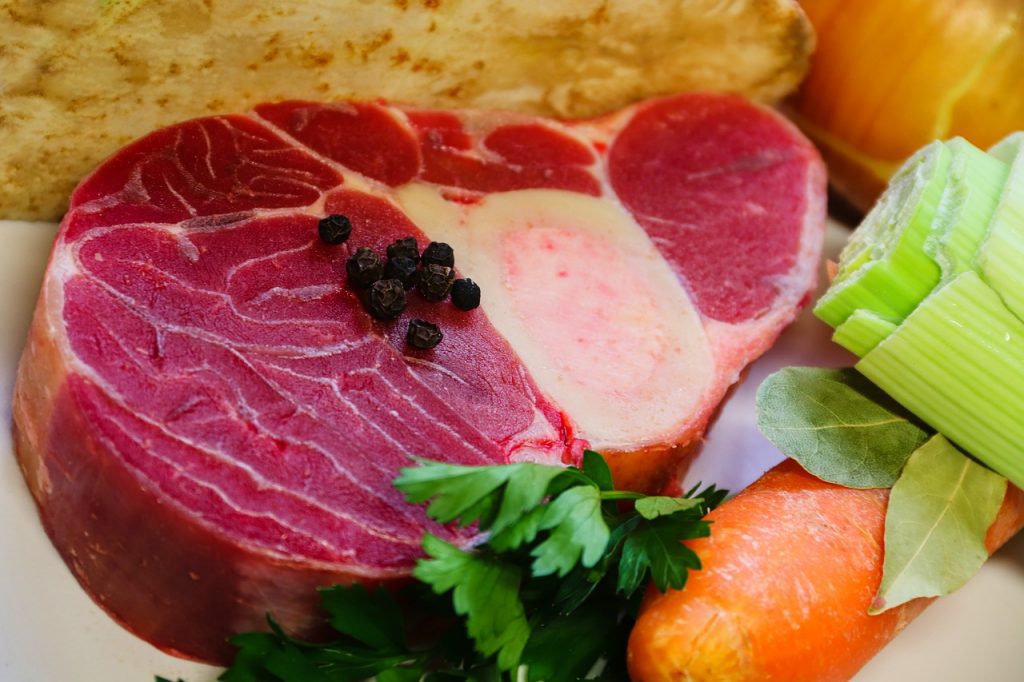
I discovered a few things from this exercise.
Predictably, people living in care homes live with multiple nutrient deficiencies. Even if they want to, they can’t change their diets to be more nutritious because the foods they’re offered are too nutrient-poor.
If you’re in assisted living, you’re a captive consumer and have very little choice about what you get to eat. It’s not correct to say that we can’t expect people to change their diets.
Not only are we neglecting to educate people about how malnourished they already are and the consequences of this, but we’ve also delayed informing them for over a decade. If almost 50,000 people a year have continued to die from malnutrition since 2007 when this was highlighted, then over half a million people have died needlessly as a direct result. And their deaths were preventable. But they weren’t warned or told what they should do about it. Nor were their carers.
To refuse to offer malnourished people the opportunity to reverse their nutrient deficiency by eating delicious, healthy foods when their lives are at stake is a heinous crime. You should be appalled that this is going on. I know I am.
And now here we are in 2021. Paper after paper keeps being published on how COVID-19 doesn’t strike people down at random. It goes after elders living in nursing homes who have multiple easily identified and reversible nutritional deficiencies. These lead to oxidative stress and ramp up the inflammatory response.
No vaccine will work against malnutrition.
Wearing a cloth face mask, washing your hands, using alcohol-based hand sanitiser, and staying home won’t protect you or your loved ones from malnutrition either. Trying to prevent person-to-person spread isn’t working well, is it? And what if overusing hand sanitisers creates the sort of selection pressure where multidrug-resistant superbugs like VRE thrive because we kill off our normal friendly commensal flora? Ali Akhtar and colleagues pose this very question in The Journal Of Preventative Medicine and highlight that homemade hand sanitisers might drive an epidemic of antibiotic resistance. If this happens, we will be up a certain creek without a paddle. And no hope of keeping our hands clean.
Physical distancing comes with a price. And it's a terrible one.
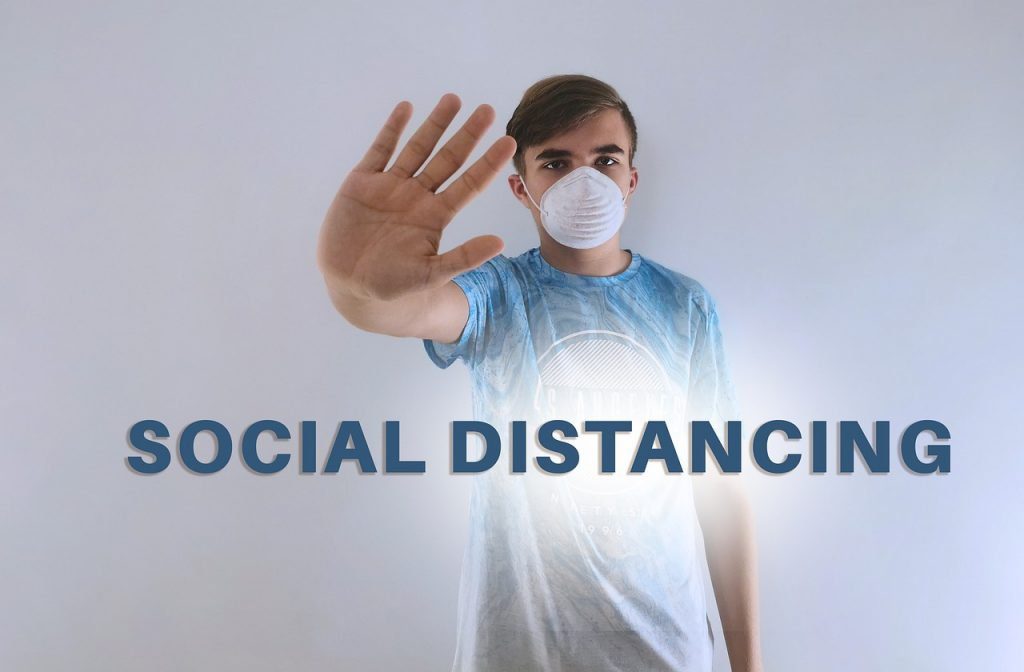
The advice to “stay home, stay safe” may be deadly for many seniors who lose their mobility and muscle strength when they stay indoors and have nothing else to do but sit around. As you stop mobilising, your likelihood of tripping or slipping and falling increases. And you’re more likely to fracture a hip and end up completely off your feet in hospital. In the bed next to someone with COVID. Eating malnourishing hospital food. Feeling isolated, alone, and depressed with nobody visiting you. Even at the best of times, breaking your hip when you’re a senior is often a death sentence.
Then there’s the fact that social isolation is known to be at least as great a risk factor for early death as smoking, alcoholism, and obesity. Rates of loneliness and isolation have skyrocketed in people of all ages struggling to maintain contact with people.
You already knew that stress can kill you. But did you know the name of one deadly stress-related, serious medical condition is broken heart syndrome? It’s also called stress cardiomyopathy or Takotsubo cardiomyopathy. And research has shown that broken heart syndrome spiked in spring 2020 during this time of stress.
While the charity Mind has revealed that more people have faced a mental health crisis during the SARS-CoV-2 pandemic than ever before. I wish I didn’t know as much as I do about stress-induced illness. But I’ve had to battle my fair share of it. In doing so, my perspective on health and illness changed. When you’re desperate enough, you’ll try lots of different things to attempt to get some respite. Some things work better than others. But I gained an appreciation for the magnitude of the physical effects of stress, not only the emotional and psychological ones.
Could lockdown be contributing to the exact thing it's trying to avoid?
Chronic stress and anxiety leave you in a constant state of fight, flight or freeze. Hormonal changes accompany this and lead to all sorts of physical changes in your body. While the effects on blood pressure are well known, fewer people are aware that chronic stress can impact your metabolism, digestion, reproductive hormones, microbiome, and immune system enough to contribute further to malnutrition.
On some level, you already know that when you’re run down, your immune system behaves differently. Your ability to fight infections is compromised. If you’ve ever suffered from cold sores, shingles or picked up a cold when you’ve been going through a tough time in work or with your personal life, you’ll know what I mean.
When you’re run down, you’re a sitting duck for an infection. What do you imagine lockdown, the hysteria in the media with the resulting social contagion of fear, and the loneliness and isolation of being forced apart from your supports is doing to you and everyone else? Combine that with our historical history of gradually increasing malnutrition with the more acute effects of comfort eating and drinking at a national level bringing about weight gain while simultaneously reducing people’s nutrient intakes further.
How changes in your behavioural patterns could increase your risk of dying
The “quarantine fifteen” appears to have turned into the “Covid nineteen”… pounds that is. Weight gain during the pandemic is a real phenomenon. You can’t outrun a bad diet, and that’s a fact. Rather than being a result of gyms closing, this weight gain has more to do with:
- disordered eating patterns,
- boozing more from stress and boredom,
- poor sleep,
- and other factors which affect your hormones and metabolic health.
But movement and exercise are still crucial for your physical, emotional and psychological health. Getting outside into the fresh air or meeting people at the gym are great ways to let off steam. Sadly, too many people have been scared away from going out. Or don’t feel motivated to exercise at home.
You might have the best intentions to do some exercise. But without a regular schedule, it quickly turns into “I’ll do it tomorrow.” Then tomorrow turns into next week. Next thing you know, you’re out of the pattern and embarrassed you’ve let yourself go so badly.
Watch out for unforeseen effects of getting medical help for symptoms caused by the response to the pandemic
Then we have the additional effects that psychotropic medications have. Because we respond to mental health crises by going to our doctors. Who prescribe antidepressants and anxiety lowering drugs. Antidepressant prescriptions in England hit an all-time high during the pandemic while referrals to psychological services plummeted. Longterm antidepressant use increases your risk of dying young. Adding a benzodiazepine on top of an antidepressant has recently been shown to increase the risk of death even more than antidepressants alone.
And medications to treat the gut problems like reflux and IBS brought about by the combo of high stress, eating badly, poor sleep and drinking more. Not to mention blood pressure tablets and sleeping aids.
This recent observational study from the British Medical Journal identified that if you use proton pump inhibitors (PPIs) to block stomach acid, your likelihood of needing oxygen, being admitted to intensive care or dying from SARS-CoV-2 shoots up. PPIs are often prescribed for gastroesophageal reflux disease (GERD).
While you’d expect more people to buy over the counter pain medications for all the headaches they’re suffering from brought about by:
- anxiety,
- drinking,
- poor diet,
- and sleep deprivation,
- as well as side effects from other medications being prescribed more commonly.
You couldn’t make people any more susceptible to illness if you tried.
You're not powerless after all
You feel like you need to do something to help people. Like you should be doing your part to protect yourself and others from COVID by taking precautions. Nobody likes feeling helpless when faced with a crisis. But you have to consider whether what you’re doing is causing harm or not. There’s a good reason I swore to “first do no harm” when I became a physician. Too often when we provide medical advice, our good intentions hurt those we want to help.
So what can you do to protect yourself and others from this and other viruses?
Eat real food. That means cooking from scratch. I know stress levels have been running high, and it’s hard to cope with what’s going on. So if you’ve been emotional-eating, drinking more than usual, and reaching for comfort food, that’s a natural response to everything you’re going through. But it could be putting your health and your life at risk.
What's the ideal diet for COVID?
If you want to protect your body against pathogens, an animal-based diet, rich in protein, is most nutritious. Especially, when you eat nose to tail, include the organs, eat small, oily fish, and shellfish. Red meat is more nutritious than chicken and poultry. Eat red meat and enjoy it. This will help you to increase your intake of zinc-rich foods.
Step away from the junk food. Don’t eat food that somebody’s great, great granny somewhere wouldn’t recognise as food. Because refined carbohydrates and other highly processed foods are the top sources of salt in the Standard Western Diet, you’ll need to make sure you add enough salt to your food. When you eat a real food diet, your salt intake drops. This is particularly problematic if you live in hot countries, exercise a lot, are on diuretics for your blood pressure or swollen legs, or you have diarrhoea, vomiting, or excessive fluid losses for any reason.
Minimise your intake of gluten. That means wheat, barley and rye. Better yet, stop eating it completely. It’s mostly made from carbohydrates, inflammation, and tears. Don’t rush to replace it with gluten-free, ultra-processed food. Replace it with unprocessed foods like meats, vegetables, shellfish, fish, some fresh fruit. If you don’t have problems with inflammation, autoimmunity, and chronic pain, you can add some eggs, dairy, nuts, seeds, and properly prepared pulses. Possibly even a little gluten-free grains like white rice, buckwheat, or maize.
Yes, I said white rice. If you’re relying on the nutrients from rice bran to stop deficiencies, your diet isn’t good enough. And you need to eat more liver, red meat, shellfish, and small oily fish! Rice bran is where you’ll find most of the arsenic and enzyme inhibitors in rice.
Don’t believe me? You can go through the diet analyses I put up above with a fine-tooth comb. The most nutrient-dense diet there contains no grains, nuts, seeds, eggs, dairy, pulses, or processed foods. It’s 100% gluten-free, soy-free, corn-free, and dairy-free. The diet that has the most essential nutrients across the board is the autoimmune protocol.
You have the resources to protect yourself from COVID
I’m here to remind you that you are not helpless. You can take action. And you can help to save lives. The greatest precautions you could take might be to support your health and that of the people you care about. Changing your diet to a more nutrient-dense one could offer you vital protection in the times ahead.
Do the benefits of making these dietary changes end there? No, they extend beyond providing you with a more robust defence against pathogens. Because these dietary suggestions will help with chronic inflammation, gadolinium toxicity, exhaustion, burnout, autoimmunity and more.
You may feel as betrayed and dismayed as many of us who discover the extent and cause of the current crisis do. How can you help us to take action RIGHT NOW to put an end to this? Because it’s beyond a joke. It’s shameful that anyone would continue to argue that nutrition should take a back seat at this stage. Or that people won’t change.
People can change with support.
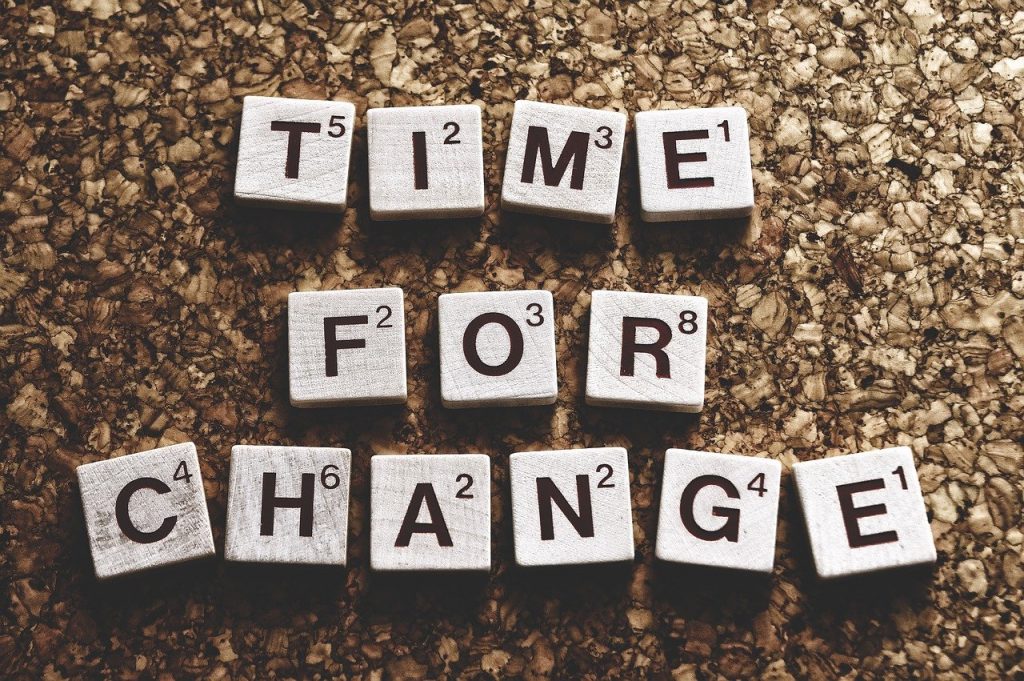
And those in dire need of nutritional support need you to speak up for them and advocate for their right to not die from malnutrition. They don’t need platitudes about not being able to change. They need protection from the worst effects of coronavirus disease and poor nutrition. Mostly, they need proper nutrition.
What can you do?
Of course, you need to make sure your own diet is on point. But then what? Try following these 3 simple steps.
Step 1
Help to get this information out by sharing it with your family, friends, colleagues and acquaintances. Share it on social media. Pin it. Let other people know. It’s really that important.
Step 2
Our authorities also need to know the truth. They’re the ones exerting power over what we, and our elders, eat. So share with them. Get in touch with your politicians, the people running the care homes, the dietetics associations, public health, the World Health Organisation. Tell them how appalled you are about this fiasco. We need to hold them accountable. People should not be dying of malnutrition while surrounded by food.
People shouldn’t be dying of malnutrition. Full stop. But that’s a whole other conversation.
Step 3
I hope you’re feeling incensed, energised, and motivated enough to take this problem to social media influencers and the mainstream media. There are stories of countless seniors and other people who are struggling right now with illness caused by malnutrition. Those stories need to be told. And everyone needs to be warned about the dangers of poor nutrition. So if you are able, raise your voice and get the media to amplify it.

